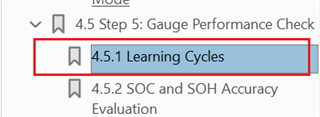Other Parts Discussed in Thread: BQ40Z80, BQ34Z100, BQ40Z50, BQ76905
Tool/software:
Hi,
I’m currently working on a project that uses the MSPM0 microcontroller along with the BQ76907 IC for battery management. One of our key requirements is to accurately measure the State of Charge (SoC) of the battery pack.
After reviewing the datasheet, I found that the PASSQ sub-command can be used to retrieve a 12-byte value containing accumulated charge and time data. Based on my understanding, this accumulated charge is not equivalent to the actual SoC of the battery pack. Please correct me if I’m mistaken.
I have a few questions related to calculating SoC using the PASSQ command:
-
Is there any documentation or recommended approach for calculating SoC specifically for the BQ76907?
-
In the event of an unintentional power cycle of the AFE, does the BQ76907 retain the accumulated charge and time values and there by calculation of SOC will not get affected, or are they reset?
-
When connecting the battery for the first time, is there a specific initialization process required to ensure the SoC is configured correctly in the AFE?
We are approaching the final stages of development, so any guidance on these points would be greatly appreciated.
Thank you in advance for your support.


